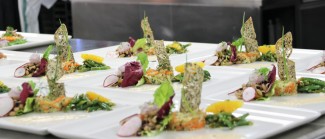Some of the visitors flying into Solomon Islands for the Pacific Games in November will land at the newly upgraded International Terminal in Honiara. For accommodation, they will have several options to choose from, all graded to international standards.
Located in Oceania to the northeast of Australia, the people of this country of six major islands and 900 smaller ones have always had to find resilient means of survival in a hard-to-reach part of the world.
Trade across villages and islands has always been important. And as the world and its trading patterns have become more globalized in recent decades, this has presented challenges and opportunities for the people of Solomon Islands.
As a small country with limited natural resources, prioritizing economic sectors and activities where the potential for value-addition and job creation is high as a top priority. A diagnostic study in 2009 identified four sectors with export potential. Three were commodities sectors, while the fourth was trade and services, specifically tourism.
Despite the country’s stunning coastlines and verdant ecosystem, its tourism potential was largely untapped. In 2014 the Enhanced Integrated Framework (EIF) kick-started a USD$1.5million Solomon Islands Tourism Inclusive Development Project to promote the sector and create economic opportunities for the country’s citizens.
The project produced the first-ever Solomon Islands National Tourism Policy in 2015, followed by the Solomon Islands National Tourism Development Strategy. These provided a roadmap to strengthen the economic linkages of tourism stakeholders, including the cruise ship industry.
The industry lacked clear standards and quality control, for instance over accommodation. Of the 160 accommodation service providers at the time, only one in 10 could be sold to overseas wholesalers by the Solomon Islands Visitors Bureau. Some facilities listed as resorts were mere homestays, making accommodation decisions hit-or-miss choices for tourists.
That changed in 2017 when, with support from EIF, the country developed minimum standards and a classification scale for tourism accommodation. These tools provide a set of measurable criteria and outline items and services that must be in place for tourism accommodation.
The tourism policy provided for inclusivity of the wider aspects of Solomon Islands culture and society, and recognized the important synergies between tourism, agriculture, and culture to stimulate job opportunities and improve procurement of local products in the tourism value chain.
Analysis showed that five percent of total tourism revenue came from the sale of handicrafts but most handicraft makers operated informally and sold their wares on the roadside or under beach umbrellas. In 2018, with support from EIF and other development partners and its own financial contribution, the Solomon Islands Government built a handicraft center to house this trade.
Further support went towards increasing the capacity of Solomon Islands Visitors Bureau to enable it to effectively undertake destination marketing, digital marketing and rebrand the country. The School of Tourism and Hospitality at the Solomon Islands National University was supported to enhance culinary training. From providing only certificate-level qualifications, the institution today offers diploma and bachelor's degree programs.
The proof of the pudding is in the eating, and the numbers leave a sweet taste. By 2019 when the project was completed, tourist arrivals had increased by 44% from 2014 levels. Tourism services as a percentage of GDP increased by 17.7% in the same period. The upswing in tourism has also brought a gender dividend, with Solomon Islands women responsible for 90% of the income generated through the sector.
As with everywhere else, the coronavirus pandemic was a significant bump in the road, but the government has worked hard on its tourism recovery plans and encouraging domestic tourism.
Looking back, we can now see that we, through this process, shaped the sector to suit Solomon Islands context eco-destination, eco-tourism providing a comparative advantage via its upstream and downstream linkages, and employment-generating poverty alleviation capacities. It has also allowed us to market-test new export products.
The work of the EIF has further contributed to community and rural inclusivity and put resource owners in the driver's seat of sustainable development. It is estimated that only five percent of Solomon Island's accommodation is foreign-owned.
EIF’s contribution has been a catalyst for transformative change. It has shown that even in a small country, the right intervention can trigger big positive changes, connect people, build a homegrown private sector and integrate the population into the mainstream economy. It can unlock wealth from within.
In August 2023 the UN General Assembly adopted a resolution granting Solomon Islands a three-year extension, until 2027, before it climbs to the next rung of the development ranking. This extra time will ensure that the country’s graduation is sustained, resilient and irreversible through diversification and transformation of the productive sector.
Apart from recent infrastructure developments, Solomon Islands in July signed an air services agreement with China and New Zealand and is pursuing an additional two, enhancing interconnectivity and competitiveness.
The Pacific Games in November will be the first big influx of visitors post-Covid, and they will find a country raring to compete on and off the field.
With improved connectivity and the promise of business, sports and recreational tourism, for Solomon Islands the sky is the limit.
If you would like to reuse any material published here, please let us know by sending an email to EIF Communications: eifcommunications@wto.org.

